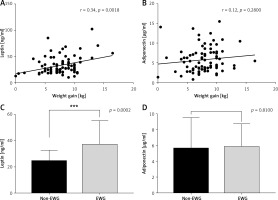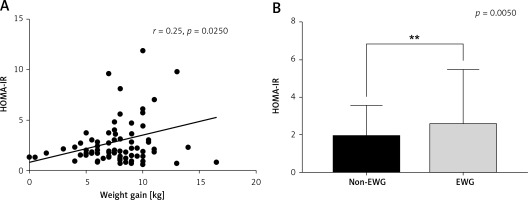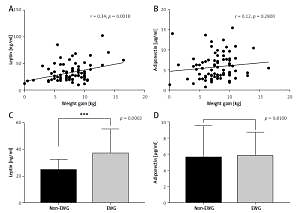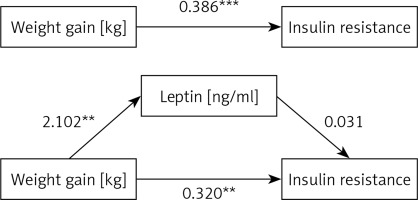Introduction
In October 2015, China completely relaxed the one-child policy, replaced by the universal two-child policy. The introduction of the universal two-child policy will stimulate the growth of the population in comparison to the traditional one-child policy [1]. In addition, with the acceleration of social industrialization process, more women prefer to delay childbearing unless their education accomplished or professional careers achieved [2]. Therefore, the proportion of women delivering infants at the age of 35 years and above, usually defined as advanced maternal age, has increased steadily [3].
For decades, it has been indicated that pregnant women in advanced maternal age (AMA) will have higher risk of developing some adverse perinatal outcomes, including gestational diabetes mellitus (GDM), hereditary disease, pregnancy-induced hypertension and pre-eclampsia [4–6]. Among them, GDM is a common noncommunicable disease that can be prevented by appropriate lifestyle management [7]. It has been demonstrated that the distinguishing characteristic of GDM is increased insulin resistance (IR) progressively along with the increase of gestational week [8].
According to the Global Burden of Disease 2013 Study (GBD), up-to-date information indicated that levels and trends in overweight and obesity were steadily increasing along with the growth of age, especially for women in developing countries [9]. Moreover, previous studies have indicated that women with obesity before pregnancy were more prone to develop excessive weight gain (EWG) during pregnancy with reference to the Institute of Medicine (IOM) modified criteria (2009) [10, 11]. Numerous studies have demonstrated that people with obesity were more exposed to elevated circulating level of leptin [12–14] and low circulating level of adiponectin [15, 16], which may decrease the insulin secretion and sensitivity and further resulted in IR [17]. To date, there have been several studies that have demonstrated the effect of serum adipokines including leptin and adiponectin on the risk of GDM [17–21]. However, there are few studies focusing on whether the association between gestational weight gain (GWG) and IR is mediated by serum adipokines concentrations in AMA.
In the present study, we aimed to illustrate whether the association between GWG in the third trimester of pregnancy and IR was mediated by serum adipokines concentrations in AMA.
Material and methods
Study design
This cross-sectional study including 80 pregnant women with advanced maternal age and singleton pregnancy was conducted at the Zhong Da hospital, Southeast University, Nanjing in China. The sample size was calculated by the Power Analysis and Sample Size software (PASS2011) with α of 0.05 (two tailed), power (1–β) of 90%. The study was authorized by the ethics committee for human research in Zhong Da hospital and adhered to the STROBE guidelines for observational studies [22]. Written informed consent was obtained from all pregnant women prior to inclusion in the study. The pregnant women were recruited consecutively before delivery from the Department of Obstetrics and Gynecology between August 2016 and July 2017. If pregnant women were AMA, aged 35 years and above, with singleton pregnancy, they were eligible for the study. We excluded pregnant women with maternal age less than 35 years; diabetes and cardiovascular diseases before pregnancy; severe hepatic and renal disorders and autoimmune diseases prior to pregnancy. We collected demographic information including maternal age, education, pre-pregnancy body mass index (P-BMI), pregnancy and obstetrical history, last menstruation, history of macrosomia and GDM and family history of diabetes. GWG during late pregnancy was obtained by weight before delivery subtracted from weight at the beginning of the third trimester (28 week). Then, weight gain (WG) in the third trimester of pregnancy was stratified into non-EWG and EWG according to IOM 2009 [23].
Additionally, blood samples were collected after the participant had fasted for at least 8 h but not more than 12 h. Blood was centrifuged at 3000 rpm for 10 min within 4 h after collection. Subsequently, the serum was separated and glucose and lipid parameters including triglyceride (TG), total cholesterol (TC), and low- and high-density lipoprotein-cholesterol (LDL-C, HDL-C) were measured immediately. The remaining serum was stored at –80ºC for later analysis of insulin and adipokines including leptin and adiponectin.
Insulin was measured using electrochemiluminescence immunoassay (ECLI) in the Department of Clinical Laboratory, Zhong Da hospital affiliated Southeast University. Homeostasis model assessment-insulin resistance (HOMA-IR) indices, a safe method for pregnant women to evaluate the IR, were calculated using the updated HOMA2 method (based on the computer model and provided by the University of Oxford Diabetes Trial Unit) because it is more accurate than the original HOMA1 method [24].
Measurement of serum leptin and adiponectin concentrations
Serum leptin and adiponectin concentrations were measured by enzyme-linked immunosorbent assay (ELISA) kits (Millipore, Billerica, MA, USA and R&D Systems, Minneapolis, MN, USA, respectively). Average intra- and interassay coefficient of variation (CV) for internal controls for all assays were 3.7% and 4% for leptin, and 3.4% and 6.5% for adiponectin. All assays were performed by operators blinded to sample identity.
Statistical analysis
Data were depicted as mean and standard deviation for continuous variables with normal distribution and median and interquartile range for continuous variables with skewed distribution. Categorical variables were represented as count and percentage. Mann-Whitney U test was conducted in continuous variables for group comparisons between non-EWG and EWG. Correlation analysis between WG in the third trimester of pregnancy and serum adipokines concentrations (and HOMA-IR) was performed using a Spearman rank correlation coefficient (r) and then multiple linear regression analysis was used for adjusting some confounder factors. Mediation analysis was achieved by a single-mediator model and the Sobel test was used to clarify the relation of WG in the third trimester of pregnancy to HOMA-IR adjusted for serum adipokines concentrations [25]. All statistical analysis was conducted using SPSS version 23.0. Two-sided p-values < 0.05 were considered for statistical significance [26].
Results
Baseline characteristics of study participants
A total of 80 pregnant women with AMA who had complete baseline characteristics were included in the study (Table I). Those pregnant women with AMA were normal weight before pregnancy; multiparous; had a high rate of miscarriage (≥ 1) and delivered in the third trimester of pregnancy (38.74 ±1.19 weeks). Clinical characteristics of the study participants before delivery are also described in Table I. Clinical information mostly comprised fasting blood glucose (FBG) and insulin concentrations; HOMA-IR; HOMA β-cell function (HOMA-β); HOMA-insulin sensitivity (HOMA-s %); TG and TC; LDL-c and HDL-c; and serum concentration of leptin and adiponectin. Further, according to IOM 2009, WG in the later pregnancy was stratified into non-EWG and EWG.
Table I
Baseline and clinical characteristics of the study population (n = 80)
[i] Data are presented as n (%), mean ± SD or median (interquartile range) as appropriate. P-BMI – pre-pregnancy body mass index, HOMA-IR – HOMA-insulin resistance, HOMA-β – HOMA β-cell function, HOMA-s% – HOMA-insulin sensitivity, TG – triglyceride, TC – total cholesterol, LDL-C – low density lipoprotein-cholesterol, HDL-C – high density lipoprotein-cholesterol.
Relationship between weight gain in the third trimester of pregnancy and serum concentration of adipokines in advanced maternal age
Weight gain in the third trimester of pregnancy was positively correlated with serum concentration of leptin (r = 0.34, p = 0.0018, Figure 1 A), but not related with serum concentration of adiponectin (r = 0.12, p = 0.28, Figure 1 B). Compared with pregnant women of non-EWG in the third trimester of pregnancy, pregnant women with EWG had significantly higher serum leptin concentrations (p = 0.0002, Figure 1 C). There was no significant difference in serum adiponectin concentrations between women with non-EWG and EWG (p = 0.81, Figure 1 D).
Figure 1
The correlation between serum concentration of leptin (A) and adiponectin (B) and weight gain in the late pregnancy. Subsequently, comparison of serum leptin (C) and adiponectin (D) levels in non-excessive weight gain (Non-EWG) and excessive weight gain (EWG) in the late pregnancy
***Statistically significant p-value < 0.001.

Relationship between weight gain in the third trimester of pregnancy and HOMA-IR indices in advanced maternal age
Weight gain in the third trimester of pregnancy was positively associated with HOMA-IR indices indicating the IR (r = 0.25, p = 0.025, Figure 2 A). There was a significant difference in the index of HOMA-IR between women in AMA with non-EWG and EWG during late pregnancy (p = 0.005, Figure 2 B). In multivariable analysis using stepwise regression (variables included maternal age, education, P-BMI, age at menarche, parity, abortion, WG in the third trimester of pregnancy, FBG, TG, TC, LDL-C, HDL-C and serum adipokines concentrations), age at menarche, parity, WG in the third trimester of pregnancy, serum concentration of leptin, FBG and HDL-C were significantly associated with the level of HOMA-IR (β = –0.337, p < 0.001; β = 0.172, p = 0.021; β = 0.382, p < 0.001; β = 0.174, p = 0.023; β = 0.558, p < 0.001 and β = –0.162, p = 0.025, respectively). However, serum adiponectin concentrations were not statistically related to the level of HOMA-IR in AMA (Table II).
Figure 2
A – Correlation between HOMA-IR indices and weight gain in the third trimester of pregnancy. B – Comparison of HOMA-IR levels in non-excessive weight gain (Non-EWG) and excessive weight gain (EWG) during the third trimester

Table II
Multiple linear regression among clinical parameters and the level of HOMA-IR
| Variables | Unstandardized coefficients β | SE | Standardized coefficients β | t | P-value | 95% CI for β |
|---|---|---|---|---|---|---|
| Age at menarche [years] | –0.637 | 0.141 | –0.337 | –4.507 | < 0.001* | –0.919 to –0.355 |
| Parity (numbers) | 0.357 | 0.151 | 0.172 | 2.362 | 0.021 | 0.056 to 0.659 |
| Weight gain [kg] | 0.362 | 0.071 | 0.382 | 5.123 | < 0.001* | 0.221 to 0.503 |
| Leptin [ng/ml] | 0.027 | 0.012 | 0.174 | 2.328 | 0.023* | 0.004 to 0.050 |
| FBG [mmol/l] | 1.514 | 0.189 | 0.558 | 7.998 | < 0.001* | 1.136 to 1.891 |
| HDL-C [mmol/l] | –1.213 | 0.530 | –0.162 | –2.289 | 0.025* | –2.270 to –0.157 |
| Constant | 1.824 | 2.574 | – | 0.708 | 0.481* | –3.307 to 6.955 |
Data were analyzed by multivariable analysis using stepwise regression. Variables included maternal age, education, pre-pregnancy body mass index, age at menarche, parity, abortion, weight gain, FBG, TG, TC, LDL-C, HDL-C and serum adipokines including leptin and adiponectin concentrations. Weight gain means weight gain in late pregnancy. FBG – fasting blood glucose, TG – triglyceride, TC – total cholesterol, LDL-C – low-density lipoprotein cholesterol, HDL-C – high-density lipoprotein cholesterol.
Mediating effect of serum leptin concentrations between weight gain in the third trimester of pregnancy and the level of HOMA-IR in advanced maternal age
In the present study, WG in the third trimester of pregnancy was significantly associated with HOMA-IR indices (c = 0.386, p < 0.001, Figure 3). In addition, WG in the third trimester of pregnancy was significantly associated with serum leptin concentrations (a = 2.102, p = 0.002, Figure 3). However, the relation of serum leptin concentrations to the HOMA-IR adjusted for WG in the third trimester of pregnancy was not statistically significant (b = 0.031, p = 0.067, Figure 3). Subsequently, according to the Sobel test, the association between WG in the third trimester of pregnancy and HOMA-IR indices partly mediated by serum leptin concentrations was statistically significant (z = 1.588, p < 0.05, Table III).
Table III
Mediating effect on serum concentration of leptin between weight gain and insulin resistance
Discussion
To our knowledge, the study is the first to demonstrate the effect of GWG during the third gestational trimester and IR in relation to serum adipokines concentrations mainly including leptin and adiponectin in AMA. We found that in AMA, serum concentration of leptin was positively associated with GWG during the third trimester and was significantly higher in women with EWG in comparison to women with non-EWG. Also, WG during the third trimester and serum concentration of leptin were independently associated with the level of HOMA-IR in multivariable analysis. However, there was no significant difference between serum adiponectin concentration and WG during the third trimester of pregnancy. Additionally, we found a mediated effect of serum leptin concentrations between WG in late pregnancy and IR. Cumulatively, these findings suggest that the relationship between WG in late pregnancy and IR may be mediated by serum leptin concentrations in AMA.
Our study suggested that serum leptin concentration was positively related to WG during the third trimester of pregnancy (r = 0.34, p = 0.0018, Figure 1 A) and significantly higher in women with EWG in comparison with non-EWG (p = 0.0002, Figure 1 C). This association between serum leptin concentrations and GWG during late pregnancy was in accordance with those findings in other studies [11, 12, 27–29]. Recently, a cohort study demonstrated that leptin concentrations gradually increased during the third trimester of pregnancy (36 gestational week) and correlated with GWG in pregnant Mexican adolescents [30]. In another study, higher serum leptin concentrations in the second trimester was associated with greater subsequent GWG and its association remained significant after adjustment for BMI (β = 2.35; SE = 0.41; p < 0.0001) [31]. However, those findings only identified the relationship between serum leptin concentrations and GWG in general maternal age. Our novel finding was that in AMA, serum leptin concentrations were significantly associated with GWG and higher in women with EWG in comparison to those with non-EWG. The underlying metabolic effect of higher serum leptin concentrations may be due to leptin resistance to decrease its effect on target tissues along with the increase of GWG [12–14]. Leptin resistance in pregnant women with EWG prevents leptin from exerting its regulating effects on food intake, thus worsening the physiopathology of EWG and its metabolic complications [17]. On the other hand, several researchers have suggested that hyperleptinemia may be compensated for EWG by decreased food intake and increased energy expenditure [32].
In addition, we found that GWG was positively associated with IR as indicated by the HOMA-IR index (r = 0.25, p = 0.025, Figure 2 A) and HOMA-IR levels were higher in women with EWG compared with those with non-EWG (p = 0.005, Figure 2 B). In addition, the relationship between GWG and IR was still statistically significant in the multivariate analysis (β = 0.382, p < 0.001, Table II). Similarly, the ROLO study of 621 women without diabetes illustrated that EWG was associated with higher maternal HOMA-IR indices and higher maternal leptin concentrations [33]. We also observed that serum leptin concentrations were significantly associated with HOMA-IR levels after adjustment for some confounding factors including maternal age, education, P-BMI, age at menarche, parity, abortion, WG in the third trimester of pregnancy, FBG, TG, TC, LDL-C, HDL-C and serum adipokine concentrations. Physiologically, leptin is synthesized and secreted from placental trophoblasts into the maternal circulation in considerable amounts during pregnancy [34, 35] and the serum concentration of leptin was higher in pregnant women than that in nonpregnant women, with the peak occurring around the 28th week of gestation. At the same time, the trend of IR [36, 37] was similar to that of serum leptin concentration. It is possible that excessive gestational weight gain (EGWG) is associated primarily with maternal fat, but not lean body mass accrual, and may contribute to metabolic dysfunction including increased serum leptin concentration, IR and long-term obesity [38].
In the current study, we further investigated whether the effect of GWG on IR was mediated by serum adipokine concentrations using mediation analysis and the Sobel test (z = 1.588, p < 0.05, Table III). Consequently, we found that GWG was associated with IR partly mediated by serum leptin concentrations, but not serum adiponectin concentrations. Recently, a randomized controlled trial demonstrated that excess, compared with adequate WG was associated with significantly greater fat mass accrual. In addition, there was a strong positive correlation between the percentage of body fat and serum leptin concentrations (r = 0.85, p < 0.001), suggesting that most obese persons are insensitive to endogenous leptin production [39]. Thus, we speculated that EGWG may stimulate the secretion of serum leptin, which was associated with decreased appetite and increased energy expenditure compensating for WG. Moreover, it was demonstrated that women with EWG have higher levels of insulin in comparison to those with non-EWG [33]. In addition, large numbers of studies have illustrated that leptin was increased in pregnancy, especially in the third trimester, [30] and directly affected insulin sensitivity through regulating the efficiency of insulin-mediated glucose metabolism by skeletal muscle [40]. Accordingly, the effect of GWG on IR may be mediated by serum leptin concentrations in AMA.
A merit of this study is that it was the first to analyze whether serum adipokines concentrations mediated the relationship between WG and IR in AMA. Several studies have demonstrated the association between WG and serum adipokines concentrations [27, 28, 30, 31] or the IR [33]. However, there are few studies discussing the mechanism of the correlation between WG and IR in AMA. In addition, the design of this study for recruitment of participants decreased the incidence of selection bias.
Despite these strengths, several limitations should be noted in this study. First, women in AMA were recruited from a single hospital. Thus, the population in the study may not be representative of the entire population. Moreover, due to restriction of resources, we only detected the serum adipokines concentrations during late pregnancy thus the association between WG and IR mediated by serum leptin concentrations was not a cause-effect relationship. Another limitation was that we did not record information regarding diet and physical activity during late pregnancy and cannot assess their effects on GWG during late pregnancy and IR.
The study was the first to investigate the effect of GWG on IR which may be mediated by serum leptin concentrations in AMA, a noteworthy population. More cohort studies with large samples are needed to clarify the cause-effect of WG in the different trimesters of pregnancy on IR mediated by serum leptin adiponectin in AMA. In addition, further interventional studies in AMA are necessary to evaluate the effect of limiting EGWG through diet and exercise on the change of serum adipokine concentrations and improvement of IR.
In conclusion, this study demonstrated that the effect of GWG on IR was partly mediated by serum leptin concentrations in AMA. Whereas this association is on the basis of the background of this study, any causal interpretation of those relationships is not exact and restricted. Thus, well-designed and intervention studies are necessary to confirm whether the relationship between GWG and IR mediated by serum leptin concentrations in AMA from this study is generalizable to all pregnant women. Furthermore, this study also indicates that it is necessary to strengthen attention to the AMA to reduce the long-term health implication of higher IR before delivery influencing maternal and fetal health. Therefore, establishing potent strategies for prevention of EWG in the third trimester of pregnancy may bring far-reaching benefits. Obstetricians should pay more attention to provide guidance in monitoring and controlling GWG in the third trimester of pregnancy and more intervention studies are requested to confirm whether changes in WG during late pregnancy will lead to decreased IR coinciding with decreased serum leptin concentrations.




